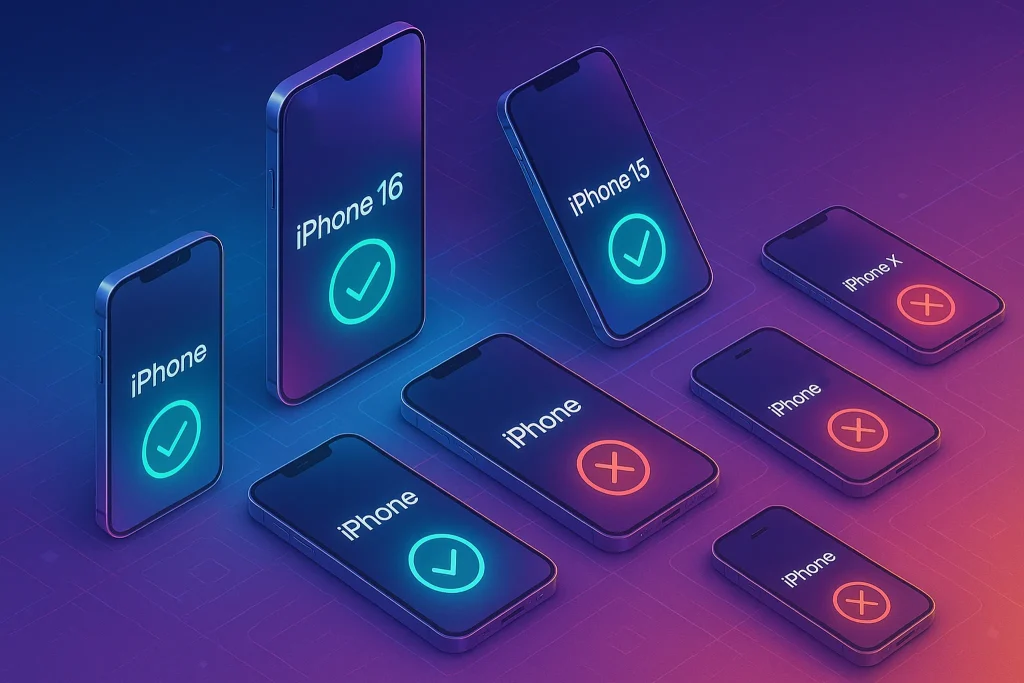-This post may contain affiliate links. If you click on one and make a purchase, I may earn a small commission at no extra cost to you.-
🧠 Introduction
In 2025, artificial intelligence has transformed from a niche field into a fierce battleground among global tech titans. With trillions at play—infrastructure, chips, and human capital—companies such as Google, Microsoft/OpenAI, Meta, Amazon, and their Chinese counterparts are locked in a high-stakes AI arms race. The result? Everyday consumers witness smarter apps and real-time AI tools, while developers grapple with rapidly changing frameworks, and nations confront the geopolitical ripples of AI dominance.
This deep-dive unpacks who’s spending what, what breakthroughs are emerging, and why it matters—right now.
2025 marks a pivotal moment in artificial intelligence. Tech giants like Google, OpenAI/Microsoft, Amazon, Meta, and rising Chinese competitors are investing hundreds of billions in new AI models, infrastructure, and talent. From Gemini 2.5’s multimodal breakthroughs to Meta’s Superintelligence Labs and OpenAI’s hardware plays, AI is the battlefield redefining consumer tech and global power.
This article breaks down who’s spending, what’s emerging, and what it means for users, developers, and the industry.
💸 Massive Budgets Fueling AI Innovation
Big tech isn’t dabbling—it’s all in.
-
Alphabet plans to inject $75 billion into AI infrastructure, systems, and services in 2025 alone.
-
Microsoft/OpenAI are pouring a combined $80–100 billion, with Microsoft’s Azure cloud becoming OpenAI’s launchpad—generating $11.5 billion in revenue this year.
-
Amazon’s AWS committed over $100 billion, bolstering AI across retail, logistics, and generative services .
-
Meta is no slouch: its aggressive $14.3B investment in Scale AI and launch of Superintelligence Labs in 2025 cements its role in the race.
Combined, these totals surpass a quarter-trillion dollars—money flowing into data centers, chips, personnel, and next-gen models.
💰 AI Spending: Massive Bets on Infrastructure
-
2025 budgets: Alphabet ($75B), Microsoft ($80B), Amazon ($100B), Meta ($60–65B) — totaling over $300B in AI infrastructure and tools.
-
That investment exceeds the GDP of many countries and far outpaces China’s DeepSeek, which achieved model parity at lower cost.
What This Means:
-
Unprecedented infrastructure scale enabling hyperscale AI services and device-level integration.
-
Dramatic price drops: inference costs plunged from ~$20 to $0.07 per million tokens in two years.
🏢 Who’s Leading the Charge?
Google / Alphabet
Google is betting on Gemini 2.5 and Veo 3, its flagship AI and video generation efforts powered by ultra-fast TPUs and custom inference hardware . Beyond labs, they’re embedding AI into search, YouTube, Workspace, and Android—cementing AI as ubiquitous in user life.
-
Spearheads AI with Gemini 2.5 (enhanced reasoning, coding, multimodal) and Veo 3 (4K video generation).
-
$75B capital spend in 2025 emphasizes AI-first cloud services and consumer tools.
Microsoft / OpenAI
Microsoft’s $13B Azure deal—plus renegotiations over IP and platform—reflects deep OpenAI integration. Yet friction exists: Microsoft seeks to assert control over AGI-era terms, while OpenAI chases more autonomy, creating tension even as Azure revenue soars. Meanwhile, OpenAI is building its own hardware strategy through “io” under Jony Ive, and even tapping Google TPUs—signaling strategic diversification.
-
$80B investment in Azure AI; deep integration of ChatGPT and Copilot.
-
OpenAI’s $6.5B acquisition of io (Jony Ive’s hardware firm) and expansion into Google Cloud TPUs signal major infrastructure play.
Meta
Meta doubled-down with Superintelligence Labs, co-led by scale AI veterans. Hiring top OpenAI researchers and offering up to $100M signing bonuses illustrates their bold talent strategy. Yet insiders warn that cultural clashes in the lab could derail efforts .
-
Launched Meta Superintelligence Labs, backed by $14–15B investment in Scale AI and led by Alexandr Wang and Nat Friedman.
-
Faces intense hiring competition—OpenAI says it’s offering $100M signing bonuses, stoking talent wars.
Amazon / AWS
AWS is quietly powering a wave of enterprise and retail AI, behind Alexa and Bedrock Agents. With its $100B investment, Amazon becomes a stealth contender—not consumer flashy, but deeply infrastructural .
-
$100B plus in AI spending to power voice AI, logistics, and Bedrock Agents—massive footprint in enterprise and retail AI.
China’s Upstarts
Companies like DeepSeek, Alibaba, Tencent are releasing cost-effective open-source models with competitive quality—challenging U.S. dominance. Their rapid progress triggers U.S. export controls and national security scrutiny.
-
Firms like DeepSeek, Alibaba, Tencent make major progress in open-source and cost-effective models, challenging U.S. superpowers and attracting global enterprise interest.
🚀 Tech Leap: Next-Gen Models & Chips
-
AI Milestones 2025: Gemini 2.5, Grok 3.x, Kimi‑k1.5 are pushing real-time reasoning and multimodal applications.
-
Architectural advances: Google’s Veo 3 now generates fully realistic video with synchronized audio.
-
Chip innovation: Cerebras dominates inference, beating GPUs by 2×–18× on Llama 4 models.
👥 Impacts & Stakes
Consumers & Developers
-
Access to real-time generative AI in writing, art, coding & video is now mainstream.
-
Edge devices benefit from cheaper, smarter AI, reducing cloud dependency.
Global & Regulatory
-
Senate hearing led by Sam Altman emphasized U.S. leadership and export challenges with China.
-
Tech could split into U.S. vs. China spheres, amid rising concerns over misinformation and national security .
🤝 Talent & Leadership Moves 🔍
In AI, chips matter—but so do people.
-
Meta’s high-profile hires—ex‑OpenAI talent, Scale AI founders—build out Superintelligence Labs.
-
This creates immediate counter-moves: others are lining up to poach talent as soon as onboarding completes.
-
Even OpenAI’s Ilya Sutskever has left to found Safe Superintelligence, a $1B venture aimed at safe AGI—spotlighting ethical visions.
Amid the cash war for AI supremacy, talent acquisition has become a central battleground:
-
Meta has aggressively recruited AI officials. Former OpenAI board member Helen Toner warns others are already eyeing these hires, as Meta lured talent with $100M+ offers and Scale AI’s co-founders via high bonuses.
-
Ilya Sutskever has left OpenAI to lead Safe Superintelligence Inc., signaling deep investments in safety-focused AI.
These shifts reflect:
-
Deep henkilö tensions within Meta’s new Superintelligence Labs—some insiders foresee internal clashes slowing progress.
-
Meta investing $14.3B in Scale AI and joining its leadership with Nat Friedman and Alexandr Wang, reshaping the battlefield.
🏗️ Uneven Global AI Landscape
The U.S.–China AI competition is now a true geopolitical arms race:
-
Chinese firms like DeepSeek and Alibaba are narrowing the gap—offering performance parity on models like R1 at dramatically lower costs.
-
U.S. policymakers and companies like OpenAI and Nvidia are calling for export controls to protect national advantage.
-
The European Commission has launched €200B in AI funding to strengthen the continent’s role.
🌍 Geopolitical Dynamics & Ethics
AI isn’t just tech—it’s geopolitics.
-
Chinese models closing the gap sparks calls for U.S. export controls.
-
The EU counters with €200B in AI funding to build its own sovereignty .
-
Senate hearings, led by Sam Altman, emphasize responsible AI deployment and China competition .
-
Regulations around misinformation, privacy, bias, and usage are top of mind as AI systems are embedded in daily life.
🔮 AI Use Cases & Ethical Challenges
Generative AI isn’t just hype—real-world deployments are skyrocketing:
-
Spend on generative AI hit $33.9B in private funding, and AI tools are being incorporated across sectors—from logistics to education.
-
Supercomputers like Tesla’s Dojo promise infrastructure for autonomous systems and national defense.
-
Yet with progress come ethical concerns: AI-powered facial recognition, black-box decision making, and biased model outputs require oversight and safeguards .
📌 What This Means for Consumers
-
Consumers benefit from consumer-grade AI everywhere—from smart homes to in-app features.
-
Developers can access ultra-powerful APIs, agent frameworks, and multi-modal models—but there’s increased fragmentation and fast-paced disruption.
-
Businesses must adapt AI ops: expect generative summarizers, voice agents, and logistics automation.
-
Ethical concerns remain rife—from facial recognition misuses to job displacement .
-
Everyday AI: We’ll see EmberSynth music, AI companionship agents, and assistant roles built into apps and homes.
-
Regulatory watch: A Senate hearing addressed U.S.–China AI competition and the need to manage misinformation .
-
Open-source pressure: Lightweight open models challenge big-budget giants, pushing for efficiency (e.g., R1 vs. ChatGPT‑5).
🔮 Looking Ahead: 2025 and Beyond
What’s next?
-
AI Agents Everywhere: In 2025 we’ll see AI characters in gaming, enterprise agents in workflows, and health-savvy assistants managing personal care.
-
Ethics & oversight: Expect new guardrails—age-old privacy, bias, fairness, and export controls demanding compliance.
-
Open-source evolution: Countries and institutions will leverage open code to bypass big tech lock-in—challenging business models.
-
Hardware diversification: From Stargate super-centers to custom silicon like SoftBank/Xilinx, compute infrastructure will spread globally.
-
2025 will be defined by AI agents in every domain—finance, logistics, customer service—powered by frameworks like Amazon Bedrock.
-
Ethical and energy scrutiny is rising: carbon costs are up, even as hardware efficiency improves .
-
Expect tighter regulation around bias, transparency, and export controls.
🧠 Final Insight
Big Tech’s AI arms race is rewriting the future of computation. Innovative models, massive investments, and heated talent wrangling define the landscape. Users gain near-magical capabilities; developers gain powerful tools but face fragmentation; countries negotiate who governs AI. Ultimately, 2025’s AI race isn’t just about innovation—it’s shaping a new world order.
❓ FAQ
Q: Will AI powers split along U.S./China lines?
A: Likely—cost-effective Chinese models and U.S. export restrictions suggest diverging ecosystems .
Q: How soon will AI video be mainstream?
A: Veo 3 has launched high-fidelity video generation; mainstream apps will follow by 2026 .
Q: What about ethical risks?
A: With rapid deployment comes real risk: misuse in surveillance, misinformation, bias—urgent regulation is underway .
Q: Will U.S. and Chinese AI split permanently?
A: Likely: China’s open-source, cheap models and U.S. dominance in compute create diverging AI ecosystems.
Q: Will AI-generated video be mainstream in 2025?
A: Yes—Google’s Veo 3 speeds generation of 4K video with sound, marking true multimodal realism.
Q: Is U.S. AI investment sustainable?
A: Consolidating $300B+ in spend shows confidence—but carbon cost and regulatory pushback make unchecked growth risky .
💬 Would You Bite?
Are we headed toward an AI-powered utopia—or a fragmented tech cold war?
Drop your take in the comments and tell us which player you think will lead the AI future.👇



